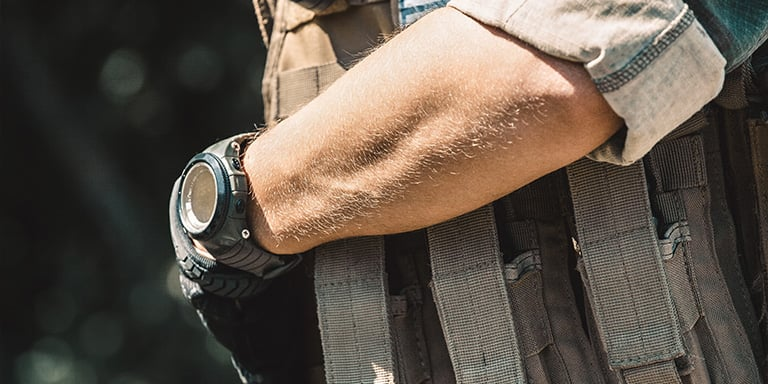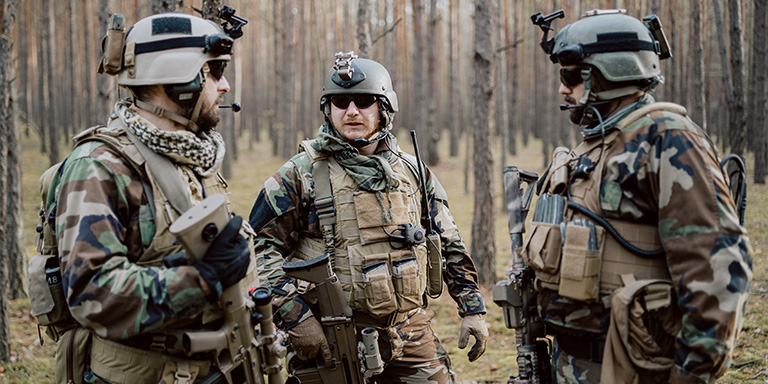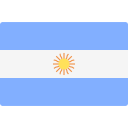How to Choose a Tactical Vest?

Most people think of tactical vests as things that only SWAT teams wear, but they have a surprisingly wide appeal and range of applications. Nowadays, they're so popular among civilians and hobbyists that even the "tactical” descriptor is starting to become something of a misnomer.
The wide variety of tactical vest features can make the shopping experience seem tricky. In this guide, we'll review the key considerations for choosing a vest that's right for you, popular features, additional gear, and some tips for what to carry on your vest.
Shop Tactical Vests
What Role Do You Want Your Vest to Fill?

The first step in buying a tactical vest is getting clear on why you want one and what you want it to do for you. There are four broad use cases that modern vests typically fall into.
Duty
When most people hear "tactical vest," they think of police officers and military personnel. If you need a vest that you intend to wear in life-or-death situations, your needs will differ greatly from other vest users. Choose a vest that excels in durability, comfortable wear over extended use, radio compatibility, and protection against blunt and bladed weapons. A built-in hydration pack reservoir is usually a good choice, too.
Non-LEO/Non-Military Training
Survivalists and other security-minded civilians comprise a significant portion of the tactical vest market. If you want to expand your bug-out gear or carry additional supplies that you may need to access quickly, a vest could be a solid choice. Weight management will likely be a top concern, so look for vests that are made of durable, lightweight materials. Insulated and/or waterproof vests can be a lifesaver if you'll be spending a lot of time outdoors, and a hydration pack reservoir will be all but mandatory.
Recreation
It's not uncommon to see sport shooters, airsoft/paintball enthusiasts, and even hunters wearing tactical vests. To a large extent, the nature of your chosen sport or activity will dictate the features that your vest should have, but we can make some generalizations. Most recreational shooters prefer modular vests with pouches and attachments that can be moved as needed. Material choice and color are important too — for instance, hunters generally want lightweight, waterproof vests in camouflage patterns or solid earth tones.
Everyday Wear
You've probably seen someone wearing a tactical vest in public and just didn't realize it. Modern concealable vests are so light and thin that they can be worn under normal clothing, sometimes invisible even to the trained eye. Obviously, concealable vests are not designed for maximum carrying capacity. At best, you'll be able to stash only a few relatively flat items inside, such as your wallet or maybe a subcompact pistol. Some concealable vests offer good protection against bladed weapons, although these models can be pricey.
What's the Difference between a Tactical Vest and a Plate Carrier?

These terms are often used interchangeably, but tactical vests and plate carriers are different things. The big difference is that plate carriers are designed primarily to protect the wearer in open combat whereas vests are better for carrying stuff.
Plate carriers are bulkier and heavier — much heavier with ceramic or steel plates installed. They generally have some attachment points for things like rifle magazine pouches, grenades, or individual first aid kits, but carrying capacity is a secondary consideration. If you expect to be shot at, you want a plate carrier, hands down.
Stab vests and spike vests can offer some protection against slashing or puncturing attacks from sharp weapons, respectively, but aside from these variants, tactical vests don't protect the wearer from injury. They're more useful for carrying lots of equipment (but not too much) when a bag or backpack is impractical or when quick access to that equipment is paramount.
Key Considerations in Choosing a Tactical Vest

Once you have a solid idea of what you need your tactical vest to do, it will be much easier to decide which aspects of any given vest are most important.
Durability and Material Selection
Durability is important in any tactical vest — it shouldn't rip, tear, or fall apart easily. Nylon and canvas are popular material choices among vest users who really put their vests through the wringer (the latter is more durable but also heavier and more expensive). Sport shooters and hunters may prefer taslan (a high-strength polyester blend) or lightweight poly/cotton blends, but be aware that poly/cotton blends rip more easily. We recommend metal buckles and clips; even heavy-duty plastic can break under a hard impact. Seams and joints should be double or triple stitched with heavy-duty thread. If you choose a vest with a mesh lining or mesh side panels, make sure the mesh is not cotton or a poly-cotton blend — opt for a stronger material.
Sizing
A correctly-sized tactical vest fits more snugly than you may expect. You should feel a slight sense of compression all around your torso while wearing it. A vest that is too big won't retain your gear securely — or protect you properly, if it's designed to resist melee weapons. Make sure the bottom of the vest extends exactly to the top of your pants, whether you intend to attach the vest to your belt or not.
Configuration
Some vests are completely modular, others have no modular components at all, and still others offer some modular components and some fixed components. If you choose a modular or semi-modular vest, avoid Velcro attachment points — Velcro cannot hold your gear securely in place. Instead, look for a vest with MOLLE attachment points or another standardized attachment system such as TekLok or ELS (Equipment Locking System). Also, if you go with a modular option, be sure to thoroughly retrain yourself whenever you make significant changes to your vest — you don't want to be unfamiliar with the layout of your vest in a life-or-death situation.
Weight and Load Balancing
You may not think that the distribution of weight on your vest would matter too much, but it can make a significant difference. If one side of your vest is just a few pounds heavier than the other, you may find that the vest is increasingly uncomfortable to wear over long periods. Wearing an unbalanced vest regularly can even cause chronic neck or shoulder pain. In an attempt to avoid this, remember to distribute your gear evenly to the greatest extent possible.
Concealability
Of course, concealability is only a factor for vests that are meant to be concealed. Like concealable handgun holsters, not all concealable vests are made equal. In general, undershirt vests become harder to conceal if they are armored or if you put anything more than small, flat objects in the pockets, although this also depends on your height and body type. If you want your vest to be as inconspicuous as possible, be sure to try before you buy, or buy one that is returnable — it's hard to tell how the vest will look on you without trying it on.
Popular Tactical Vest Features to Consider

Whether and to what extent these features are important to you will depend on what kind of vest you need and what you intend to use it for. However, these features are highly popular and practical, so it's worth considering them if you haven't already.
Drag Straps
The possibility of being shot or stabbed isn't one that anybody likes to think about, but none of us are completely safe from such harm. A drag strap is just what it sounds like: a heavy-duty strap on the back of a tactical vest that others can use to drag you to safety if you're too injured to walk on your own. If you'll be wearing your vest in any capacity that exposes you to the possibility of combat, we highly recommend ensuring that it has a drag strap.
Hydration Pack Support
A hydration pack compartment is all but mandatory if you'll be wearing your vest regularly or for extended periods. Many vests can accommodate 2 or 3-liter water bags and have woven channels or straps to keep the drinking tube out of the way. Some even have insulated compartments to help keep the water cold.
Cross-Draw Holsters
Some operators carry their sidearms on their vests instead of on their belts or in a thigh holster. Carrying your sidearm on your vest may be more comfortable, especially when sitting down, but it does make for a slower draw, so consider the pros and cons carefully.
Insulation and Waterproofing
These concerns may not matter to you, but if you work in cold climates, an insulated vest can help you stay warm. Most vests can be worn over a jacket, but that's always a bit awkward. If you have sensitive documents or fragile items that need to be protected from water damage, look for a vest with waterproof pockets. These vests can be harder to find, though, and waterproof vests usually have a smaller range of other features.
Radio Support
Cordless radio technology is always improving, but most police and military units still use corded radios for maximum range and battery life, which means more weight to carry and more cables to manage. Most cordless handheld radios will fit into any large pouch on most vests, whereas corded radios require a vest designed to accommodate them. If you use a corded radio, it's critical to keep the cables properly routed and out of the way; exposed cables aren't just an annoyance, they can be a safety concern if they get snagged on things or interfere with drawing your weapon.
Belt Attachment Points
Some vests have button or snap loops around their bottom edges designed to attach to your belt. If you'll be moving around a lot or wearing your vest for long periods, belt attachment points are all but mandatory. A vest that doesn't attach to your belt rides up over time and is more likely to be uncomfortable if it's not sized just right.
Knife-Resistant Material
No vest is impervious to bladed weapons, but a high-quality knife-resistant vest offers significant protection and may save your life one day. All else being equal, armored vests are heavier, thicker, and much more expensive. Most knife-resistant vests offer a little bit of protection against blunt impacts, but that isn't what they're designed for.
Note: there is such a thing as bulletproof vests that are light and thin enough to be worn under clothing, but they're classified as body armor, not tactical vests. Rarely (if ever) do they offer any other features.
Additional Gear to Complement Your Tactical Vest

Many operators choose to wear additional load-bearing gear to increase their tactical options in the field. Here's a quick overview of other platforms you may want to consider — just watch your total weight and maneuverability.
Chest Rigs and Load-Bearing Vests (LBVs)
A chest rig or LBV is a bare-bones harness designed to carry only the most essential gear (usually rifle magazines, grenades, and/or medical supplies). Generally, operators wear a chest rig or a tactical vest, but in certain cases, it's possible to wear both.









































































